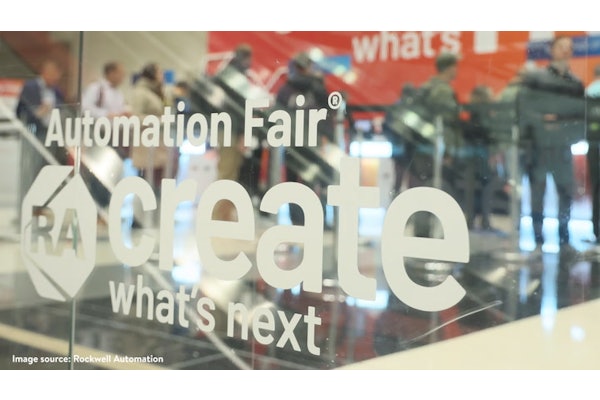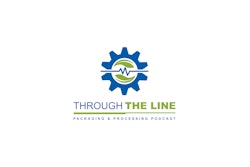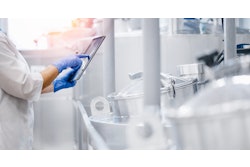Members of the U.S. pharmaceutical supply chain have just reached a major milestone toward full implementation of the Drug Supply Chain Security Act (DSCSA). As a result, the industry has a fairly good understanding of the requirements and operation of supply chain traceability up until the final phase, which will begin in November of 2023.
Members of the pharma supply chain and solution vendors have learned a lot about what it will take to meet the DSCSA track and trace requirements. Can those lessons be applied to tracking and tracing in the supply chains of other products, such as food? Let’s take a look.
The Drug Supply Chain Security Act
The DSCSA was signed into law by President Barack Obama on Nov. 27, 2013, setting up that date as the base for a number of escalating requirements over the following 10 years. A few milestones have already occurred, including lot-based traceability, but on November 27, 2018, a new requirement went into effect. Drugs introduced into the supply chain by manufacturers and repackagers after that date must have the new DSCSA product identifier applied to them. That is, they must have the National Drug Code (NDC), a unique serial number, lot number and expiration date encoded in a 2D datamatrix barcode, and printed in human readable form on each saleable package and homogeneous case. Thus all drugs in the supply chain will be ‘serialized’ from now on.
The first use of these unique identifiers will occur next November (2019) when wholesale distributors must begin using them to verify each saleable return they receive before they re-distribute them. By the end of November 2020, all members of the supply chain must only buy and sell drug products that have the DSCSA product identifier placed on them by the original manufacturer or repackager, except for exempt or grandfathered products.
Finally, in November of 2023 the supply chain must begin keeping track of their purchases and sales of every drug using the NDC plus serial number contained in the DSCSA product identifier on the packages and cases. The law requires the FDA to work with the industry over the next few years to figure out the details of the final requirements and operation of this final phase, known as the Enhanced Drug Distribution Security (EDDS) phase.
The passage of the law led to the growth of a community of vendors selling serialization and traceability solutions designed to meet the requirements of the DSCSA. Consequently there is now a collection of knowledge and experience designing, coding, selling, deploying and operating interoperable, standards-based traceability solutions, spread throughout the pharma supply chain and solution provider community. Because the law is being implemented in steps, these organizations have experience with both lot-based traceability, and now increasingly, serial number-based traceability.
The lessons this community has learned can most definitely be applied to the food supply chain. To see how this could be done, let’s compare the problems that traceability would be expected to address in these two supply chains.
The food supply chain
The increasing frequency of the scariest problems in the food supply chain are related to accidents. That is, unintended circumstances—like unintended contact with surfaces or organic matter that contaminate the food with bacteria like E. coli or salmonella—or food that has spoiled as the result of improper storage somewhere in the supply chain—like refrigerators or freezers that aren’t doing their job. Contamination and spoilage can go undetected. Consumers benefit from the use of food track and trace in situations like these because, once someone gets sick, members of the supply chain can quickly discover the scale of the problem and where best to stop its spread through targeted recalls. Track and trace systems improve the speed of recalls and the confidence in their completeness.
The Food Safety and Modernization Act (FSMA), signed into law by President Obama on January 4, 2011, mandates enhanced product tracing abilities, although the FDA has largely set aside their requirement to establish such a system. Companies involved in the production and handling of susceptible foods (meat, dairy, produce, etc.) have taken it upon themselves to enhance the tracing of their products to help minimize the impact of episodes of contamination or spoilage.
Generally, food is distributed to retail and food service outlets inside containers that are packed by the grower, manufacturer or processor. Food distributors normally do not break down cases and ship individual saleable units to these outlets. Rather, they normally ship full cases, bins and pallets, so item-level serialization is not critical to end-to-end track and trace. Container-level serialization is commonly used for traceability in this supply chain.
When it comes to the relative size of the companies involved in the food supply chain, many of the trading partners at the start of the supply chain are small, independent and technically unsophisticated. Most of the trading partners at the end of the food supply chain are just the opposite: large corporations with big IT budgets. This has important implications for who pays for the traceability systems and how they operate and interoperate.
The pharmaceutical supply chain
Unintended circumstances also exist in the pharmaceutical supply chain, but the scariest problems are more often related to intentional acts by criminals—like counterfeiting, tampering, adulterating, up-labeling, theft and diversion. Inadvertent, unintentional contamination isn’t an issue for drugs but undetected spoilage can occur in cold-chain biologics.
Unlike food wholesalers, drug wholesalers, more often than not, break open the manufacturer’s casepack of product and ship individual units to their customers (pharmacies). Despite that, drug wholesale distributors have decades of experience tracing their own serialized containers. The benefits of container-level track and trace are likely greater in the food supply chain because most of the containers start earlier in the supply chain and remain intact farther down the supply chain.
Also—just the opposite of the food supply chain—the trading partners at the start of the drug supply chain are often corporations that have significant IT resources, while the independent pharmacies at the end are larger in number and they have little IT sophistication. Of course, there are many pharmacies that are owned by technically sophisticated large corporations, but the differences between the food and drug supply chains are still significant when viewed this way
Similarities between the food and drug supply chains
But there are also similarities between the two. Even though the scariest reasons for tracing food and drugs are different, the DSCSA forces a similar after-the-fact response using traceability data. The traceability data retained by each member of the supply chain is only assembled and used after someone becomes suspicious of one or more drug packages. What exactly causes someone to become suspicious can be a large number of things identified by the FDA, but the list includes certain adverse events in patients. This is very similar to the use of traceability data for food after contamination or spoilage is discovered, or in response to illnesses in consumers.
Purely lot-based traceability is insufficient for either supply chain because the products in each lot will be split up and usually distributed widely. But the problems in the food supply chain can be adequately solved through container serialization and tracing at that level. Recalls can be made at the lot or container serial number levels. Since the lot number of the contents of each container are known, a lot-level recall can be translated into specific container serial numbers, if necessary. This type of recall is more efficient and instills a lot more confidence that the recall’s progress is known at any given time. It also enables much more fine-grained, limited-scope recalls to occur—down to a single container if that fits the given situation.
The DSCSA requires homogeneous cases of drugs to be serialized, but this is merely to enable an entire sealed case to be verified by the manufacturer, as defined in the law. Once the items are removed from a sealed homogeneous case, the requirement ends, even if those items are repacked into a different container. No other containers—including bundles or pallets used by manufacturers and reusable totes used by wholesale distributors—need to be serialized under the law. Unit-to-case and case-to-pallet aggregation is not mandated, but many drug manufacturers have chosen to capture it anyway in response to wholesaler demands.
There is no such thing as “Unit-to-case aggregation” in the food supply chain because foods are generally not serialized at the unit level. However, some types of foods may make use of container-to-pallet aggregation to simplify tracing.
Both supply chains voluntarily make use of GS1 standards. Not just Global Trade Item Numbers (GTIN), Global Location Numbers (GLN) and barcodes, but Electronic Product Code Information Services (EPCIS) and the Core Business Vocabulary (CBV) as well.
There are enough similarities between the pharma and food supply chains that the principles, techniques and technologies are easily transferred from one to the other. Both rely on GS1 standards and the retention of shipping and receiving records—at the lot and/or container serial number, or the unit serial number level—for use after an adverse event or when suspicion is raised. The absence of unit-level serialization in foods makes it less rigorous to implement and operate than traceability systems in pharma, but supply chain traceability, as a set of concepts, are easily transferred. As the benefits of traceability in food and pharma begin to accrue, will they lead to its use in other supply chains?
See solutions for the entire food and beverage industries live and in action from 400 top manufacturers. Attend educational sessions and have multiple networking opportunities all under one roof. Join us at ProFood Tech, March 26–28, 2019, McCormick Place, Chicago, IL.




















